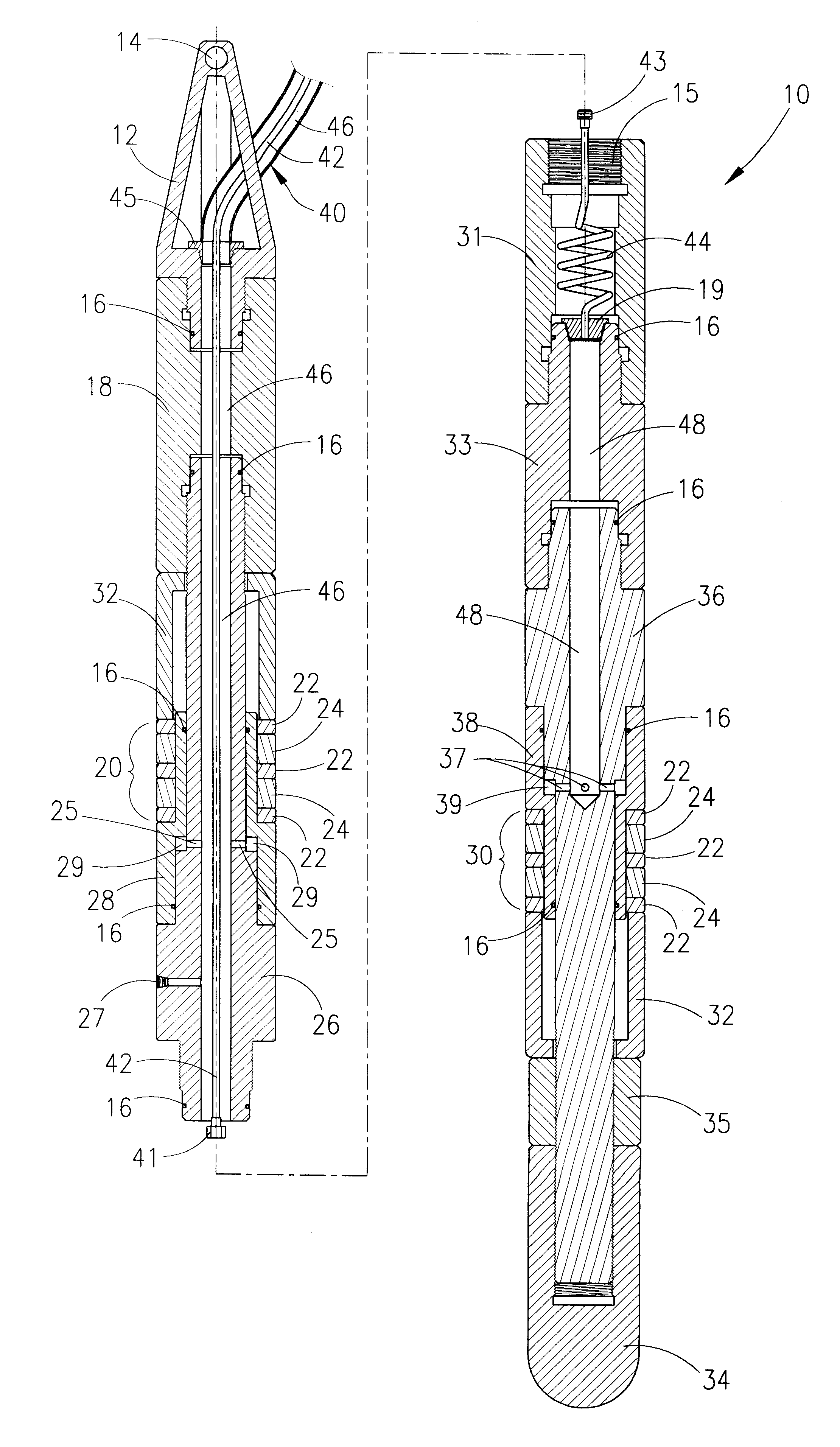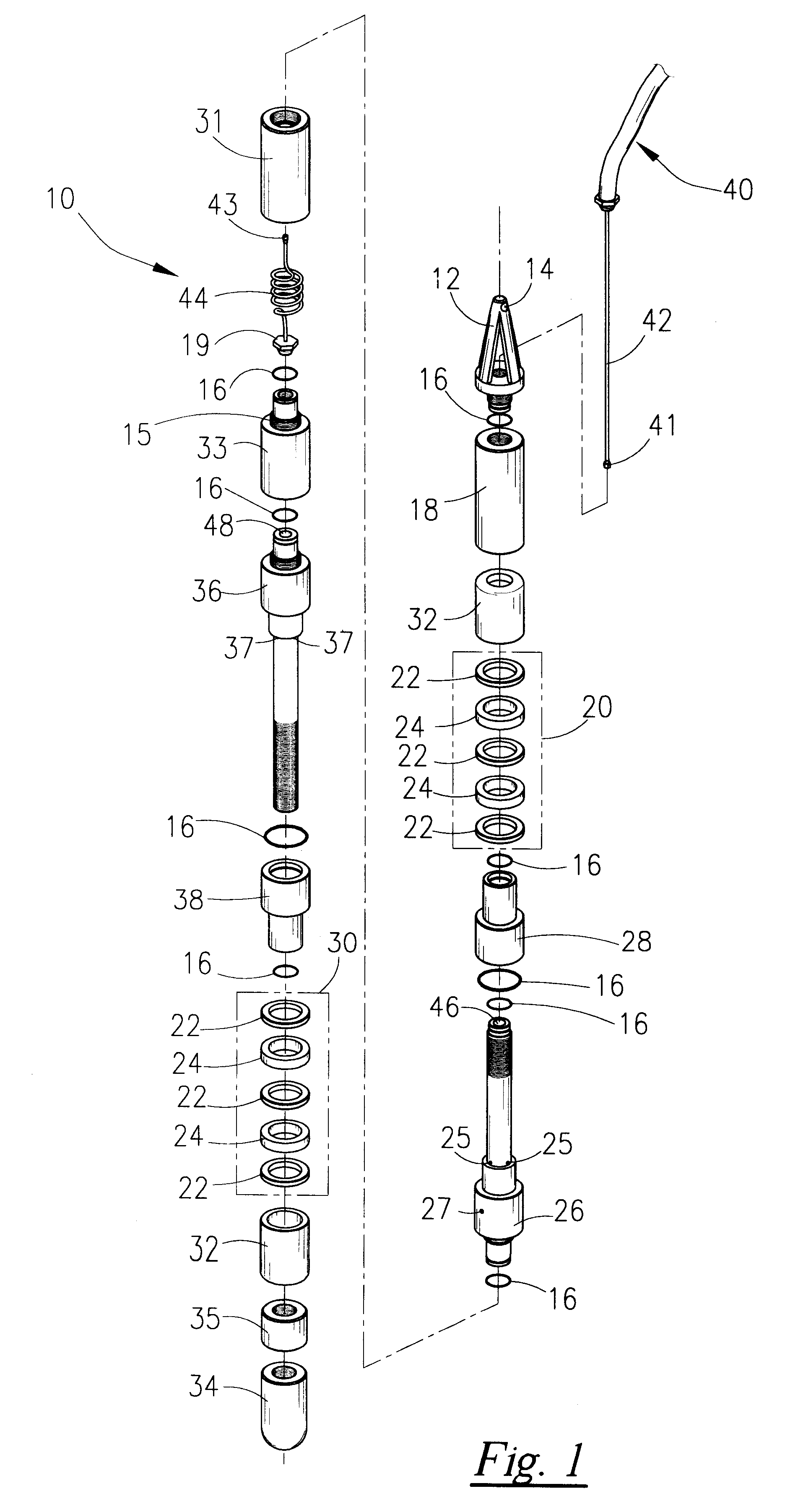Pipe testing apparatus
a testing apparatus and pipe technology, applied in the direction of instruments, structural/machine measurement, construction, etc., can solve the problems of loss of oil and gas, environmental pollution, injuring personnel at the well site, and affecting the safety of the pipe, so as to achieve the effect of adjusting the length of the tool and the distance between the upper and lower packers
- Summary
- Abstract
- Description
- Claims
- Application Information
AI Technical Summary
Benefits of technology
Problems solved by technology
Method used
Image
Examples
Embodiment Construction
Referring now to the drawings and more particularly to FIG. 1 there is shown an exploded view of the preferred embodiment of the generally cylindrical pressure testing tool (10) of applicant's present invention. The testing tool (10) is comprised on a series of generally cylindrical tubular sections fitted together by means of a plurality of threaded connections (15), male and female, each connection sealed by O-rings (16). The tool (10) has an upper packer seal assembly (20) and a lower packer seal assembly (30) spaced a desired distance apart for sealably holding the tool within a desired portion of a pipe string. The tool (10) has a lifting sub (12) having a lifting eye (14). The lifting sub (12) allows the tool (10) to be raised, lowered and positioned on the pipe string with a hoist, not shown, on a rig floor. Connected to the tool (10) is a gas hose assembly (40) through which runs a fluid line (42).
As shown in FIG. 2 and FIG. 3, the gas hose assembly (40) is connected to the ...
PUM
 Login to View More
Login to View More Abstract
Description
Claims
Application Information
 Login to View More
Login to View More - R&D
- Intellectual Property
- Life Sciences
- Materials
- Tech Scout
- Unparalleled Data Quality
- Higher Quality Content
- 60% Fewer Hallucinations
Browse by: Latest US Patents, China's latest patents, Technical Efficacy Thesaurus, Application Domain, Technology Topic, Popular Technical Reports.
© 2025 PatSnap. All rights reserved.Legal|Privacy policy|Modern Slavery Act Transparency Statement|Sitemap|About US| Contact US: help@patsnap.com



